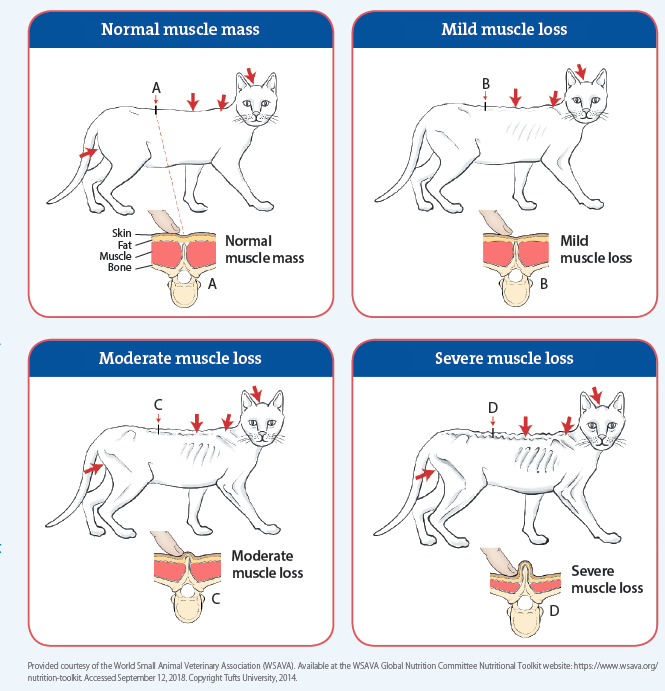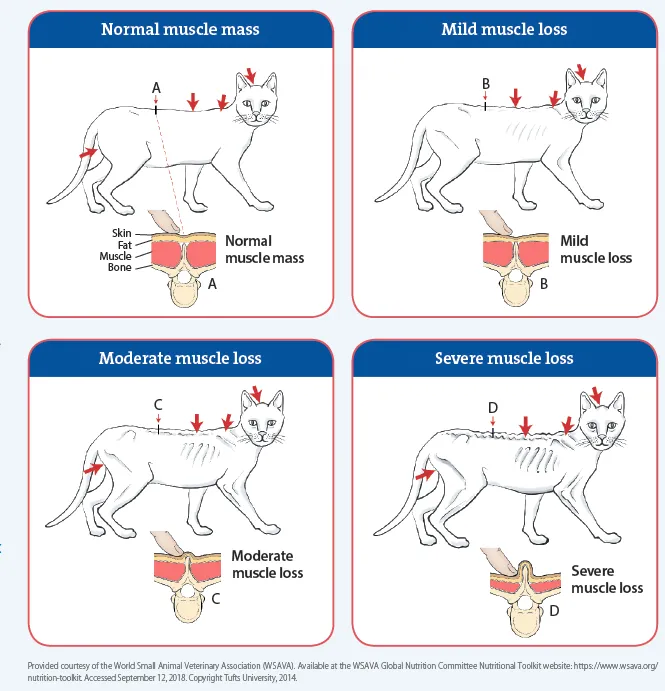You know you should be assessing your cat’s body condition score to make sure she isn’t too heavy. But what about her muscle condition score? Cats with undue muscle loss, either because of a chronic disease or simply the aging process — or both — are often weaker than they should be and may have a decreased ability to recover from illness or surgery.
The World Small Animal Veterinary Association (WSAVA) has a validated system for assessing whether your cat’s muscle mass is adequate in its nutrition toolkit (wsava.org/nutrition-toolkit). Developed by Lisa Freeman, DVM, PhD, a board-certified veterinary nutritionist at Tufts, it divides muscle mass into normal, mild muscle loss, moderate muscle loss, or severe muscle loss (see chart). The first place to check is over the back along the sides of the spine. You should also check the shoulder blades, skull, and muscles around the pelvis.
Dr. Freeman has a video showing how to do it:https://vetnutrition.tufts.edu/2017/11/mcs. It features more dogs than cats, but the procedure is the same for both species.
When your cat is young, checking her muscle mass frequently isn’t so critical. But starting around middle age, or if your cat develops a chronic medical condition, you’ll want to be assessing her muscle mass a couple of times a year. The earlier you catch a trend toward muscle loss, the better treatment will work to slow the process.
To stave off further muscle loss, it is important to treat the underlying medical issues and pay careful attention to diet (don’t just add more protein on your own — that can sometimes further compromise a cat’s health). Pharmaceutical treatments are even in the pipeline to forestall the loss of muscle.
Muscle Condition Score
Muscle condition score is assessed by visualization and palpation of the spine, scapulae, skull, and wings of the ilia. Muscle loss is typically first noted in the epaxial muscles on each side of the spine; muscle loss at other sites can be more variable. Muscle condition score is graded as normal, mild loss, moderate loss, or severe loss. Note that animals can have significant muscle loss even if they are overweight (body condition score > 5/9). Conversely, animals can have a low body condition score (< 4/9) but have minimal muscle loss. Therefore, assessing both body condition score and muscle condition score on every animal at every visit is important. Palpation is especially important with mild muscle loss and in animals that are overweight. An example of each score is shown here.





